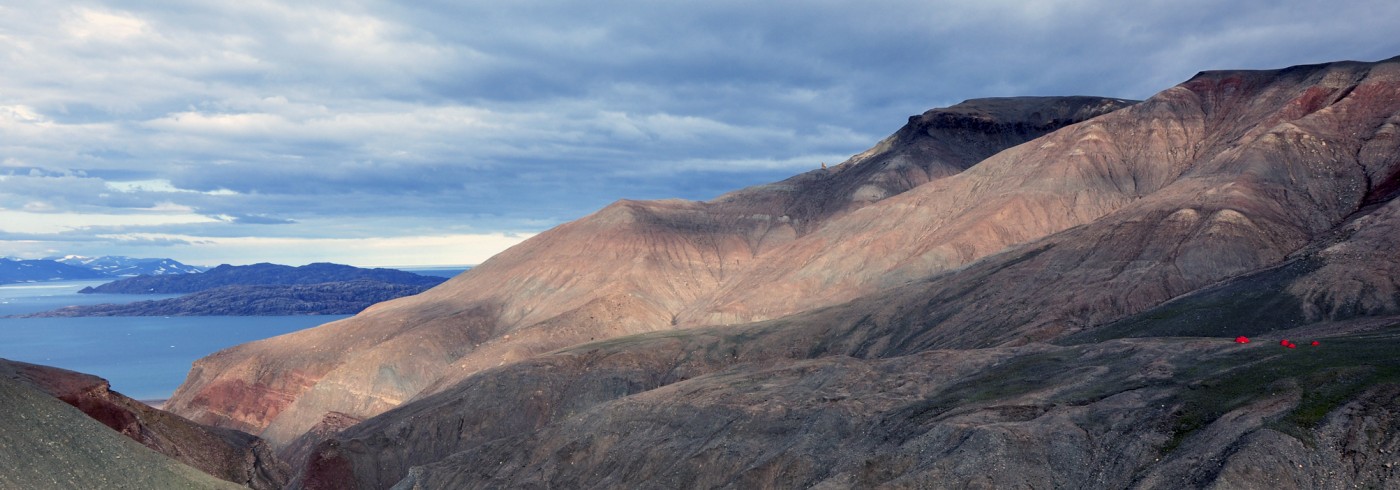Today was exhausting but productive. We decided to tackle our second objective, which was to sample the famous “Stegocephalian horizon” on the far side of Stensiö Plateau. This rock layer was the source of numerous temnospondyl amphibian fossils described in the 1930s. We climbed up to about 700 m on the south side of the plateau and crossed over the top for a spectacular view of the Finsch Islands and the pack ice stretched across Gael Hamke Bay. We then climbed through a gap in the basalt cliff and down onto the Cretaceous sandstones that overly the Triassic sequences. Henning picked up an ammonite, which was badly weathered but clearly of Cretaceous age.
Further down the steep scree we located the bivalves Myalina kochi and Anodontophora fassaensis, giving us a correlate from strata on the other side of the plateau. There were also large stromatolite mounds – these are sediment accumulations accreted by photosynthesizing cyanobacteria.
Finally after scouring the slope for about an hour Grzegorz shouted out that he had found some bone. We all scrambled across to look at what turned out to be bone fragments in an oolite – a microbially accumulated limestone indicative of shallow water conditions. After splitting the rock we identified some small temnospondyl skull and limb girdle elements (probably from long-snouted trematosaurs), as well as a 30 mm long jaw with teeth resembling procolophonids. These were terrestrial herbivorous lizard-like animals, globally distributed during the Triassic.
We headed back to camp with our prizes, but it was long and tiring climbing up the ridge and down again from the top of the plateau.
Will have an easy day tomorrow to get over it.

